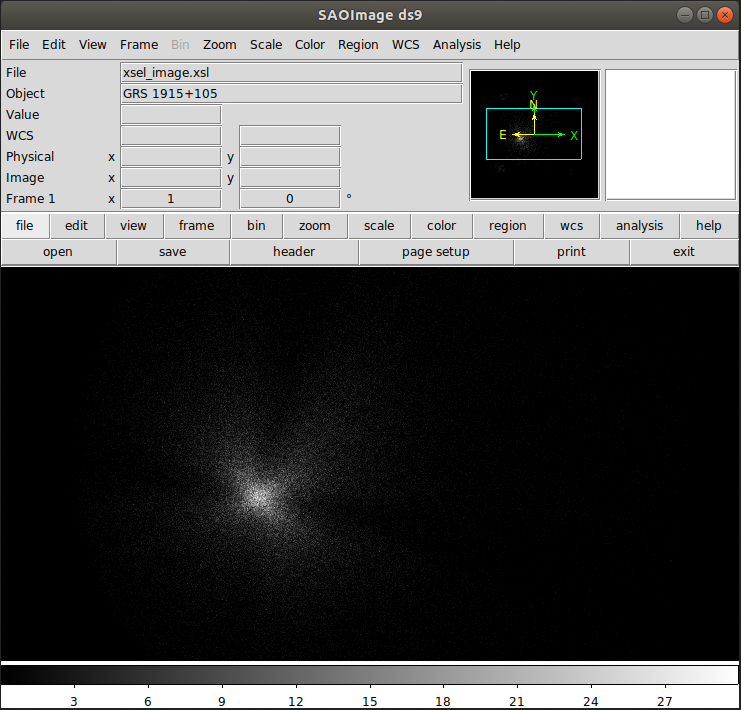
Here we demonstrate how to extract an image from SXT Level 2 data using XSELECT. The PC mode 29th March 2017 observation of GRS 1915+105 is used for an example. The observation id is G06_033T01_9000001116 . The test data used here is available in the public domain and can be downloaded from the astrobrowser portal.
$ mkdir Results
$ cd Results
$ xselect
** XSELECT V2.4j **
$ Enter session name >[ ] xsel
$ xsel:NICER > read event GRS_1915_sxt_merged_cl.evt
$ Enter the Event file dir >[ ] ./
Got new mission: ASTROSAT
$ Reset the mission ? >[ ] yes
Notes: XSELECT set up for ASTROSAT
Time keyword is TIME in units of s
Default timing binsize = 5.0000
Setting...
Image keywords = X Y with binning = 1
WMAP keywords = X Y with binning = 1
Energy keyword = PI with binning = 1
Getting Min and Max for Energy Column...
Got min and max for PI: 0 1023
Got the minimum time resolution of the read data: 2.3775
MJDREF = 5.5197000000000E+04 with TIMESYS = UTC
Number of files read in: 1
******************** Observation Catalogue ********************
Data Directory is: /path_to_present_directory/
HK Directory is: /path_to_present_directory/
TELESCOP INSTRUME DATAMODE DATE-OBS OBJECT ORB_NUM
1 ASTROSAT SXT PC 2017-03-29 GRS 1915+105 8118
$ xsel:ASTROSAT-SXT-PC > extract image
extractor v5.36 26 Feb 2020
Getting FITS WCS Keywords
Doing file: /path_to_present_directory/results/GRS_1915_sxt_merged_cl.evt
100% completed
Total Good Bad: Time Phase Grade Cut
166868 166868 0 0 0 0
==================================================================
Grand Total Good Bad: Time Phase Grade Cut
166868 166868 0 0 0 0
in 5068.8 seconds
Image has 166868 counts for 32.92 counts/sec
$ xsel:ASTROSAT-SXT-PC > save image ds9.im
Wrote image to file ds9.im
$ xsel:ASTROSAT-SXT-PC > plot image

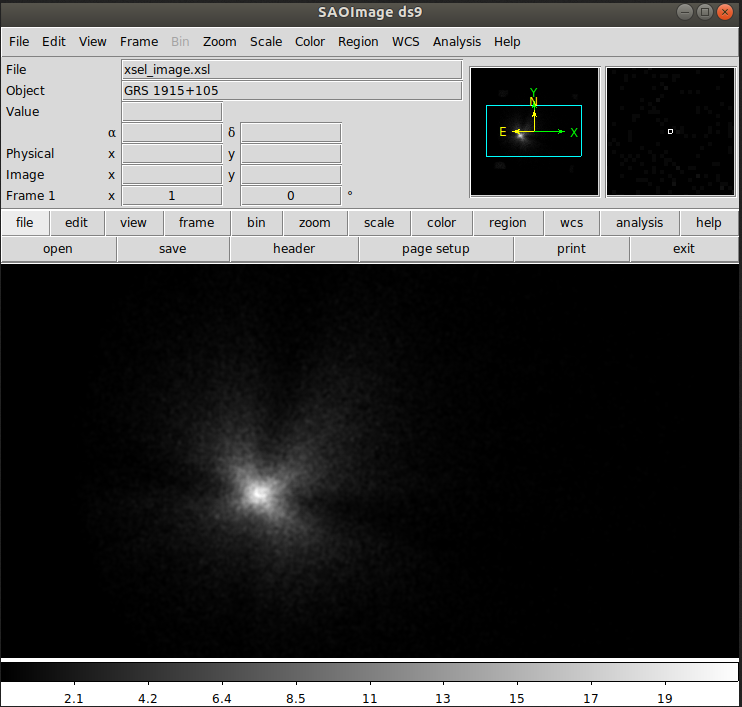
Click on zoom then zoom fit
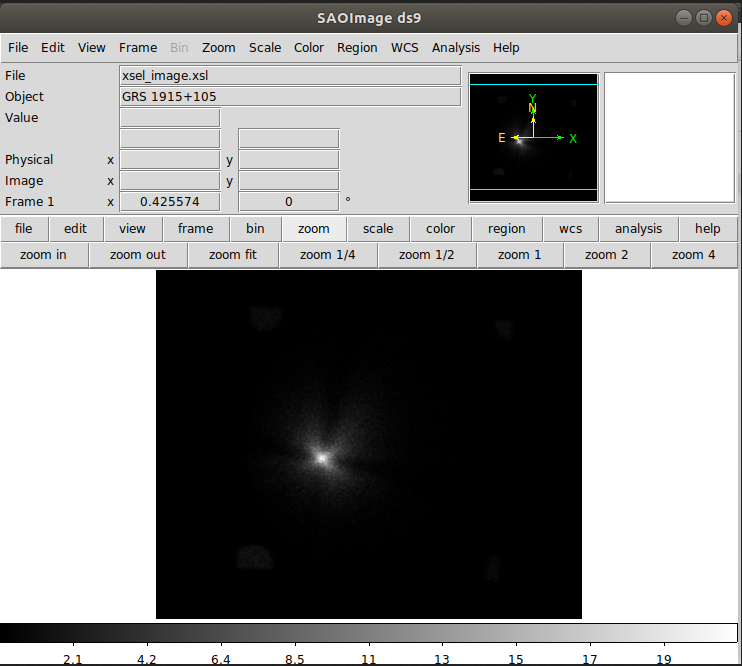
Click on scale and set scale to log scale

Click on color and use i8
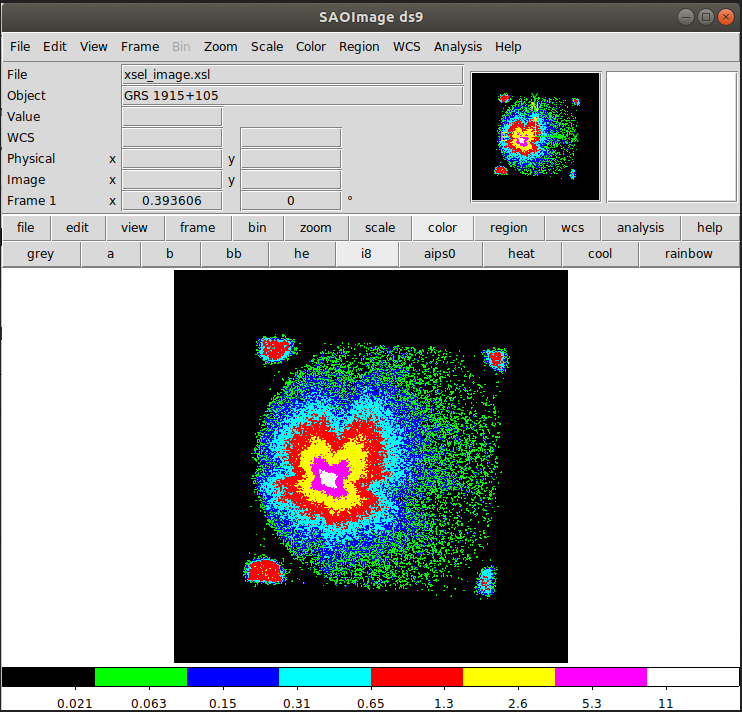
Click on edit and then click region. Select a source region of 12’.
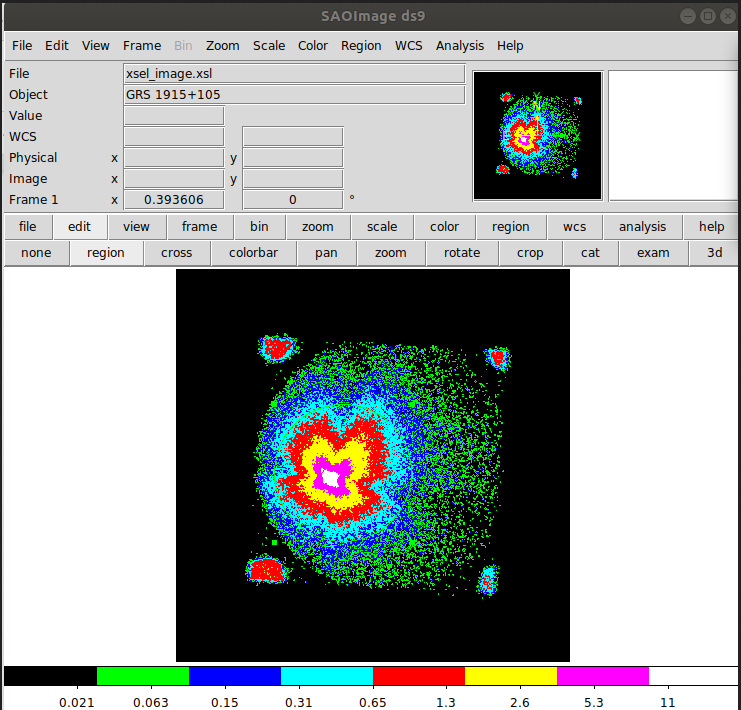
Click on edit and then click region. Select a source region of 12’.
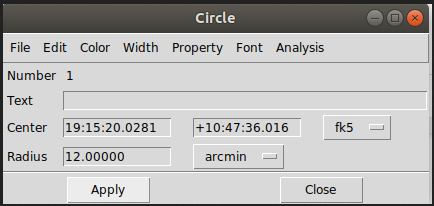
Close the ds9 app.
The image above was extracted for the full energy range of the SXT: about 0.3-8.0 keV. However, the data can be filtered to produce images over any energy band within this range, using the command filter pha_cutoff, where the range must be given in terms of channels. For the SXT, 1 channel = 100 eV
$ xsel:ASTROSAT-SXT-PC > filter pha_cutoff 30 100
$ xsel:ASTROSAT-SXT-PC > extract image
Getting FITS WCS Keywords
Doing file: /path_to_present_directory/GRS_1915_sxt_merged_cl.evt
100% completed
Total Good Bad: Time Phase Grade Cut
166868 2011 0 0 0 164857
==================================================================
Grand Total Good Bad: Time Phase Grade Cut
166868 2011 0 0 0 164857
in 5068.8 seconds
Image has 2011 counts for 0.3967 counts/sec
$ xsel:ASTROSAT-SXT-PC > save image 0.3-1keV.im
Wrote image to file 0.3-1keV.im
$ xsel:ASTROSAT-SXT-PC > clear pha_cutoff
$ xsel:ASTROSAT-SXT-PC > filter pha_cutoff 100 800
$ xsel:ASTROSAT-SXT-PC > extract image
extractor v5.36 26 Feb 2020
Getting FITS WCS Keywords
Doing file: /path_to_present_directory/GRS_1915_sxt_merged_cl.evt
100% completed
Total Good Bad: Time Phase Grade Cut
166868 164057 0 0 0 2811
==================================================================
Grand Total Good Bad: Time Phase Grade Cut
166868 164057 0 0 0 2811
in 5068.8 seconds
Image has 164057 counts for 32.37 counts/sec
$ xsel:ASTROSAT-SXT-PC > save im 1-8keV.im
Wrote image to file 1-8keV.im
$ xsel:ASTROSAT-SXT-PC > exit
$ Save this session? >[ ] No